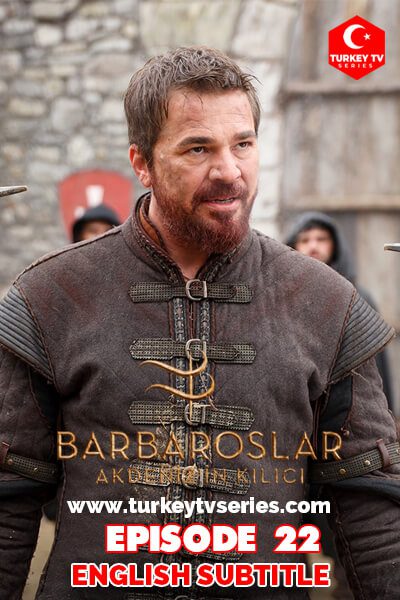Ocean King Barbaroslar With English Subtitle Episode 22
Ocean King Barbaroslar With English Subtitle Episode 22
Facebook Page
Ocean King Barbaroslar With English Subtitle Episode 22
WRECK OF A FLEET
Ocean King Barbaroslar The sixteenth-century galley was rowed by a crew of men who were all lodged on one deck, with up to six or seven of them handling the loom of the long oar. This technical achievement was comparatively simple and was based on the same principle as the outrigger that supports the oar of a modern “eight. Ocean King Barbaroslar
” As Torr comments in Ancient Ships: “The single bank of the galley was as effective as the numerous banks of the ancient oar-ships. One of these new systems increased the number of oars by placing them at shorter intervals along the bank and making them of several different lengths inboard, the rowers being arranged in several lines along the deck. Ocean
while the other maintained the number of oars at fifty or sixty but increased their size and strength, several rowers working at every oar.” The term galley derives from Greek. It is first found in its current interpretation in a treatise attributed to the Emperor Leo VI of Byzantium, to denote warships with a single bank of oars.
The great distinction between the galley and the galleon was that the former was primarily an oared vessel, whereas the galleon was a sailing ship only. In between these two came the galleass, which was both oars- and sail-propelled. In the smaller tonnage class came the galleot, so favored by the Turks, which was an oared vessel with auxiliary sails but usually with no more than three men to an oar.
Ocean King Barbaroslar In terms which the modern yachtsman can understand: the galleot was a fast, light, powered vessel; the galleass a fifty-fifty (50 percent power and 50 percent sail); the galleon a large sailing vessel; and the galley a large, powered ship. These were the four main types that were to be found in the Mediterranean throughout the sixteenth, seventeenth, and eighteenth centuries. Ocean
The rivalry between them was finally to be decided in favor of the galleon (or, in later British terms, the ship of the line). With her greater beam and hold space, she was able to accommodate a power of armament that could blast her opponents out of the water long before they—even with their greater maneuverability—could get within range. Ocean King Barbaroslar
This was something that was to be proved by Francis Drake at Cadiz in 1587 when he shattered the galleys of Spain inside a sheltered harbor where, according to the theories of the time, his sailing ships should have been at a vast disadvantage. In a somewhat similar style, Kheir-Eddin Barbarossa recognized that for the type of actions which he would be initiated, the small galley or galleot would prove the most useful vessel. A sailing ship, it was true, was faster when the wind blew. Ocean
But in the long Mediterranean summer, especially in the central area, calms often dominated the sea for days on end. Then again, the deeper draught of the sailing vessel was a distinct drawback in many coves and small harbors. Furthermore, a sailing ship could not be launched at its prey like a dart: a galley could be. At the same time, although he was later compelled to have large slave-driven galleys under his command, the smaller galleot manned by fellow Turks was a far more efficient fighting machine. Ocean King Barbaroslar
The objective of a raider like Barbarossa was, after all, not to sink his opponent but to capture him, together with everything and everybody on board. An action, then, consisted in laying your vessel alongside your opponent and capturing him by boarding. It was clearly advantageous to have rowers who, the moment ship was laid against the ship, could down oars and add to your fighting strength. Quite apart from this, the hardy Turks were admirable material for the task. As one astute judge of “oar flesh” commented. Ocean King Barbaroslar
“The Turks are the best for this work, being vigorous, enduring, uncomplaining, and often well-trained (having already been oarsmen in Turkish galleys) … The inhabitants of the Barbary Coast [i.e. Moors, Berbers, and Arabs] are nowhere near as good as the Turks, being of an awkward and nervous temperament, and inclined to dogged resistance and invincible stubbornness. Ocean King Barbaroslar
They are very difficult to manage and cause innumerable troubles. Negro slaves, on the other hand, just waste away. They are soft and indolent, with little resistance to sickness, and at the slightest bit of cold they die like flies . . The buyer who knew this useful bit of advice could save a lot of time and money when looking round a slave market. For the slave market, of course, was not something confined to North Africa or the famous bagnio of Constantinople. King Barbaroslar
it was part .and parcel of every great Mediterranean seaport. Whereas it was Christians who were for sale in Algiers, Moslems were for sale in Genoa and Venice. Pantero Pantera, who was captain of the papal galleys, published an invaluable work on the Mediterranean ships of his period in Rome in 1614 in which he provides some interesting information about the size and types of oars used in galleys. Ocean
Unfortunately, there is no known equivalent Turkish work, but since the Turks and the other Moslems largely based their designs on European types, there is no reason to suppose that there was any great deal of difference between them. The oars of a galleot were usually worked by two or three men apiece. On the galley proper the normal crew to each oar loom was four, although sometimes there might be as many as five or six, while on the hybrid galleass as many as eight or even more might share the same bench at the loom of one oar.
By Pantera’s time, about half a century later than Barbarossa’s, the large galley had begun to supersede the galleot, since the ability of a ship to withstand the punishment of heavy cannon fire had now become most important. In the smaller Turkish vessels mainly used by Barbarossa, however, it was not unusual to have only two men to the oar, with a reserve of two. Thus the oars could be worked “watch-and-watch,” with two freshmen taking over at regular intervals after asleep and something to eat.
To Be Continue………




[…] Barbaroslar Episode 24 With English Subtitle Insomuch that before these Corsairs have been absent from their abodes much longer than perhaps twenty or thirty days, they return home rich, with their vessels crowded with captives, and ready to sink with wealth; in one instant, and with scarce any trouble, reaping the fruits of all that the avaricious Mexican and greedy Peruvian have been digging from the bowels of the earth with such toil and sweat, and the thirsty merchant with such manifest perils has for so long been scraping together, and has been so many thousand leagues to fetch away, either from the east or west, with inexpressible danger and fatigue. Barbaroslar 22 […]